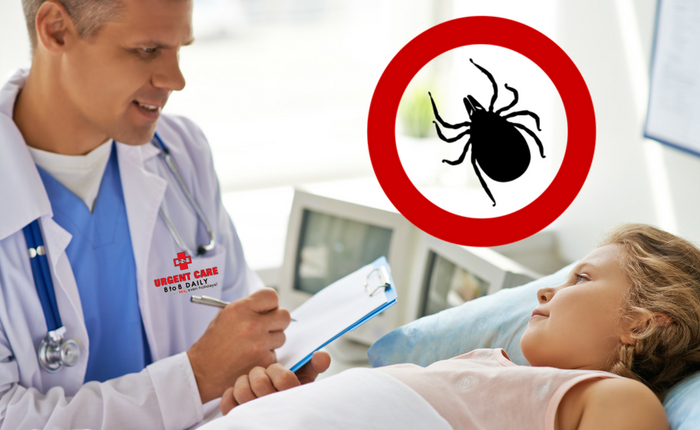


During the warmer months in the United States, tick-borne illnesses account for more human diseases as compared to any other insect-borne illness. Lyme disease is the most prevalent tick-borne illness. However, over the past 50 years, a lot of new tick-borne illnesses have been discovered by scientists.
Read further to learn more about tick-borne diseases.
Tick-borne diseases, also called zoonotic diseases are contagious diseases that can be spread between animals and humans. Ticks do not produce illness on their own but a virus or bacterium infested tick can lead to diseases in humans if the pathogens get transmitted from the tick’s bite.
7 of the most frequent tick-borne diseases in the United States include:
Lyme Disease - The bacteria causing Lyme disease spreads through the sting of an infected black-legged tick and is distinguished by the appearance of a rash in the shape of a bullseye.
Babesiosis - It is a protozoan infection caused by microscopic parasites that contaminate your red blood cells. It’s frequently spread from black-legged or deer ticks.
Ehrlichiosis-Ehrlichiosis is usually propagated by the lone star tick. Sometimes a rash may be visible due to it.
Rocky Mountain Spotted Fever (RMSF) - It's also called spotted fever rickettsiosis and is a bacterial disease transmitted through various species of infected ticks.
Anaplasmosis - Anaplasmosis is bacterial infection spread by the black-legged ticks but is not as common as Lyme disease.
Tularemia - A highly contagious bacteria that is spread by dog, wood, or lone star ticks, is responsible for causing this disease.
Powassan Encephalitis - The virus known as Powassan (POW) causes this disease, through the bite of an infected tick. It does not transmit straightaway from person to person.
Tickborne diseases can lead to mild symptoms, the treatments for which can range from home remedies to severe infections needing hospitalization. Many tickborne diseases can show common signs and symptoms. The most common indications of tick-related diseases are:
Fever/Chills - Patients can undergo fever at variable degrees with all tickborne diseases.
Aches and Pains - Symptoms of a headache, fatigue, muscle pains, and joint pains (in case of Lyme) are included in Tickborne disease.
Rash - Typical rashes accompany diseases such as Lyme disease, Rocky Mountain spotted fever (RMSF), tularemia, and more.
Neurological Problems - Over time, devoid of suitable treatments, inflammation of brain can occur.
Preventing Tick Bites Tick exposure can take place all year-round, but during warmer months ranging from April to September, ticks are highly active. Early detection and treatment of the infection reduce the risk of severe complications.
Avoid areas with tall, woody and brushy grass and leaf litter. Instead, ensure to use the center of trails for walking.
Make sure to tick-proof your yard properly.
Make use of products comprising of 0.5% permethrin for treating clothing and gear.
Use insect repellents registered with Environmental Protection Agency (EPA) that have ingredients like DEET.
Shower soon after being outdoors and cleanse your pets.
Remove a tick immediately with tweezers.
Here are a few commonly asked questions about tick-borne diseases:
Fortunately, every tick isn't infected, so it's not necessary that you will acquire a tick-borne disease after a tick bite. Even in tick-infested areas, less than 5 % of sting leads to an infection that is easy to manage. If a tick is eliminated within 24 hours of biting, chances of Lyme infection drops dramatically.
Following a tick bite, there is a likelihood of acquiring one of these illnesses, but every tick is not supposed to be a carrier. If you have acquired the infection, it may be a few days or months before the symptoms can be noticeable, or no symptoms may appear at all. The symptom type and severity can vary with the specific illness, however, there are some common symptoms. Advance diagnosis is needed for successful treatment of tick-borne illnesses, so it is crucial to get in touch with your healthcare provider if you are undergoing symptoms.
Some experts have reported that about 38 viral species are communicated by ticks. Tick-borne viruses are observed in six different families of viruses and nearly 9 genera. Some tick-borne viruses that are considered big threat to the human health include the Bourbon, Heartland, and Powassan viruses. Powassan virus can lead to dangerous brain inflammation and may spread in humans much quicker than Lyme.
In general, after a tick bite, or following an exposure to a tick habitat, you should consider the advice of a health care provider, especially if you undergo symptoms similar to the ones mentioned above. Antibiotics are helpful in treating most of the tick-borne diseases. Your healthcare provider will determine the appropriate medication and duration of tick bite treatment suitable for your condition.